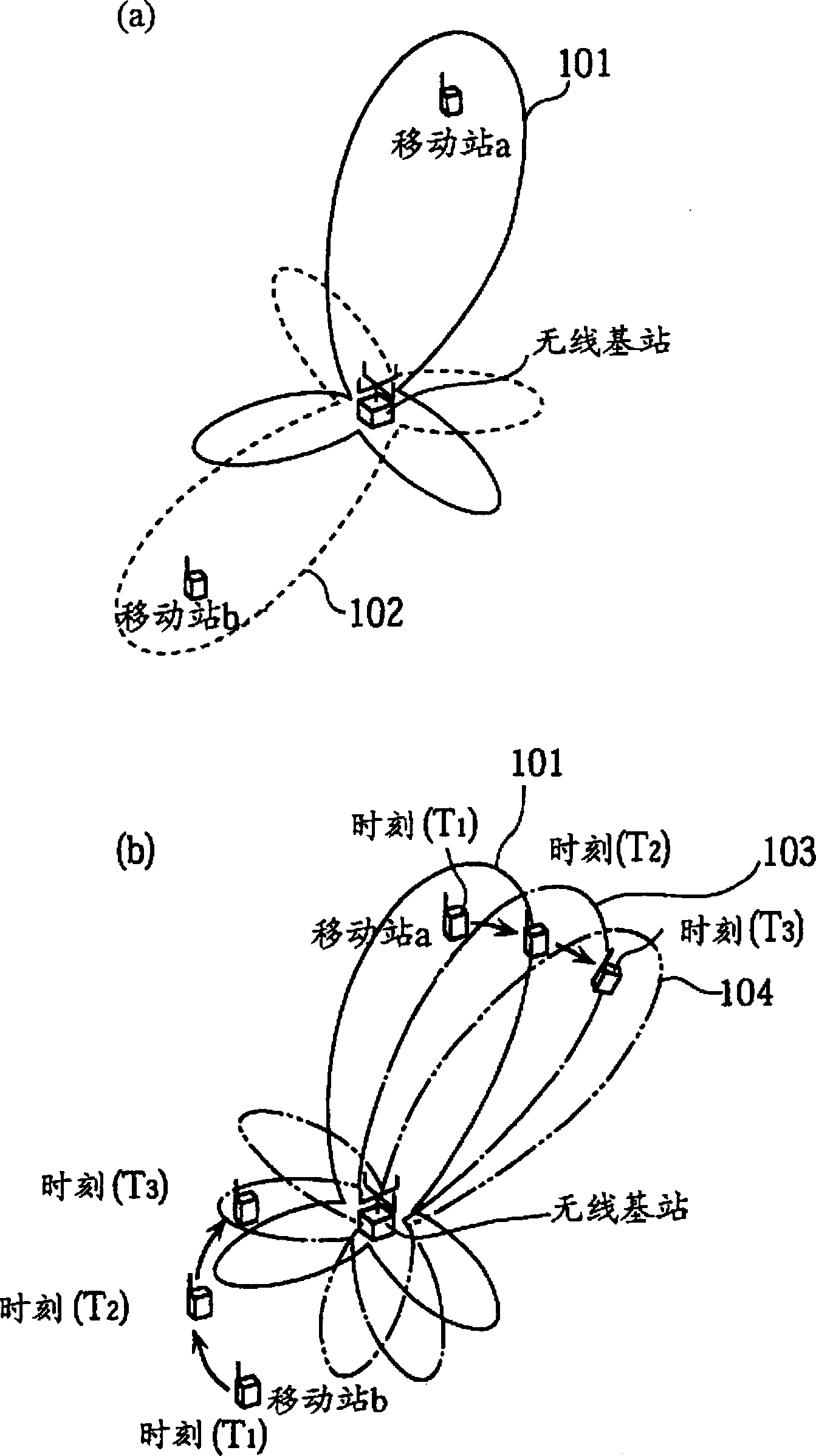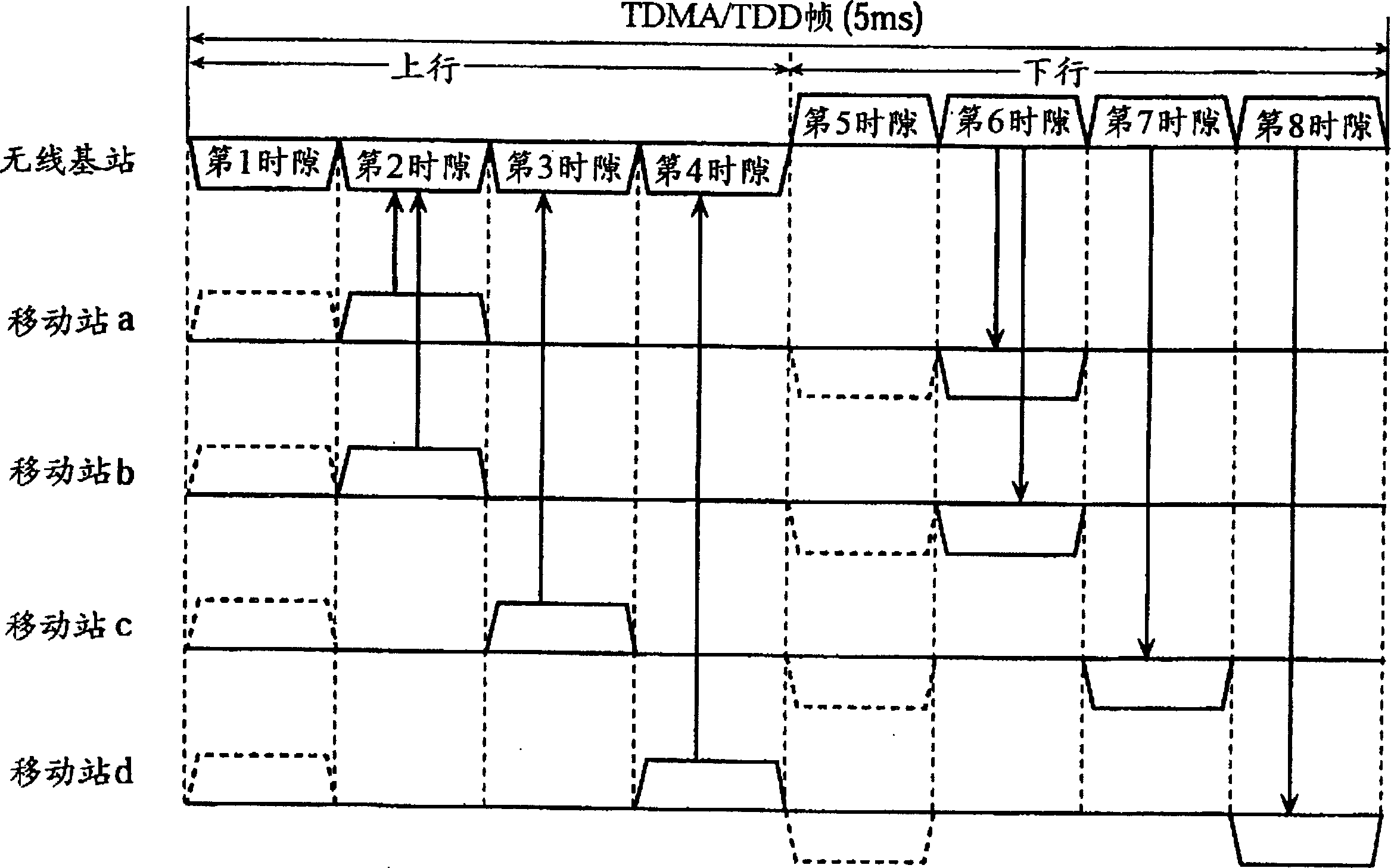Radio base station
A technology of wireless base station and wireless unit, which is applied in the direction of radio transmission system, antenna, antenna array, etc., and can solve problems such as hindering reception
- Summary
- Abstract
- Description
- Claims
- Application Information
AI Technical Summary
Problems solved by technology
Method used
Image
Examples
Embodiment Construction
[0041] A radio base station according to an embodiment of the present invention will be described below using the drawings.
[0042] The wireless base station of the present embodiment has 4 antennas, performs spatial multiplexing communication with a maximum of 4 mobile stations through an adaptive array method, and uses the first time slot and the fifth time slot except for control signal transmission and reception through the TDMA / TDD method. The second and sixth slots, the third and seventh slots, and the fourth and eighth slots other than the slots perform time-division multiplex communication with a maximum of three mobile stations. The radio base station of the present embodiment performs multiplex communication with mobile stations a, b, c, and d using the TDMA / TDD frame structure shown in Figure 2 as an example of operation description. In this embodiment, the first time slot and the fifth time slot are determined as time slots for sending and receiving control signal...
PUM
 Login to View More
Login to View More Abstract
Description
Claims
Application Information
 Login to View More
Login to View More - R&D
- Intellectual Property
- Life Sciences
- Materials
- Tech Scout
- Unparalleled Data Quality
- Higher Quality Content
- 60% Fewer Hallucinations
Browse by: Latest US Patents, China's latest patents, Technical Efficacy Thesaurus, Application Domain, Technology Topic, Popular Technical Reports.
© 2025 PatSnap. All rights reserved.Legal|Privacy policy|Modern Slavery Act Transparency Statement|Sitemap|About US| Contact US: help@patsnap.com



